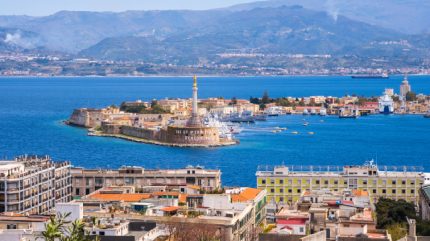
Italy has granted final approval for constructing the Strait of Messina Bridge, which is expected to become the world’s longest suspension bridge by connecting Sicily to the mainland.
The plan received endorsement from an inter-ministerial committee responsible for overseeing strategic public investments, as confirmed by the domestic Transport Ministry.

Discover B2B Marketing That Performs
Combine business intelligence and editorial excellence to reach engaged professionals across 36 leading media platforms.
The project is valued at €13.5bn ($15.76bn) and has moved into its implementation phase following the Italian Interministerial Committee for Economic Planning and Sustainable Development’s (CIPESS) approval.
Webuild will supervise the bridge’s construction, collaborating with international companies such as Spain’s Sacyr and Japan’s IHI, alongside Italian partners, including Condotte and Itinera. Stretto di Messina, the concessionary company, is responsible for overseeing the project’s implementation.
The design team includes experts in suspended bridge construction such as Denmark’s COWI.
The approval came after the signing of an addendum to the contract between Stretto di Messina and Eurolink, the general contractor led by Webuild. This addendum is valued at €10.6bn.

US Tariffs are shifting - will you react or anticipate?
Don’t let policy changes catch you off guard. Stay proactive with real-time data and expert analysis.
By GlobalDataWebuild chief executive Pietro Salini said: “The decision made by CIPESS to approve the Strait of Messina Bridge project marks the start of a new season of vision, courage and confidence in the capabilities of Italian industry and the entire infrastructure sector.”
Spanning 3,666m in total length, with a suspended span of 3,300m, the Strait of Messina Bridge will feature a deck approximately 60m wide. It will support three vehicle lanes in each direction, two railway lines, and additional service lanes.
The bridge will feature steel towers reaching 399m in height and a suspension system with cables 5,320m in length. It will be designed to withstand seismic activities and extreme weather conditions.
Complementary infrastructure includes over 40km of roads and railway lines on both sides of the strait. These additions aim to improve connectivity and mobility within the regions while addressing environmental impacts through mitigation initiatives.
In Calabria, new road connections will cover roughly 10km, with rail lines extending 2.7km to connect with both existing and future railway networks. A multifunctional centre is planned for Villa San Giovanni to support project management activities.
The Strait of Messina Bridge is part of a broader investment strategy aimed at modernising Southern Italy’s infrastructure and boosting its connectivity with Europe through the Scandinavian-Mediterranean Corridor of the Trans-European Network – Transport.





